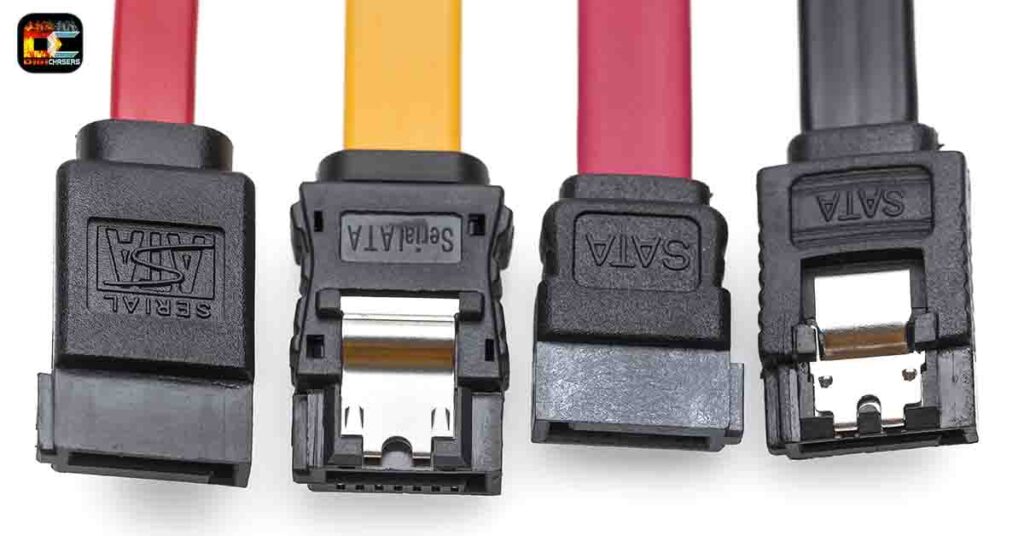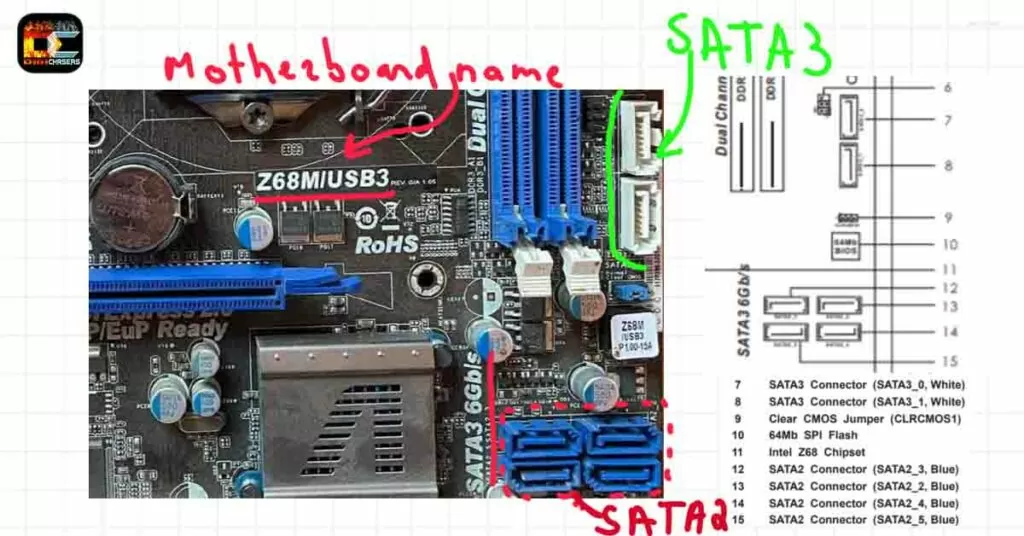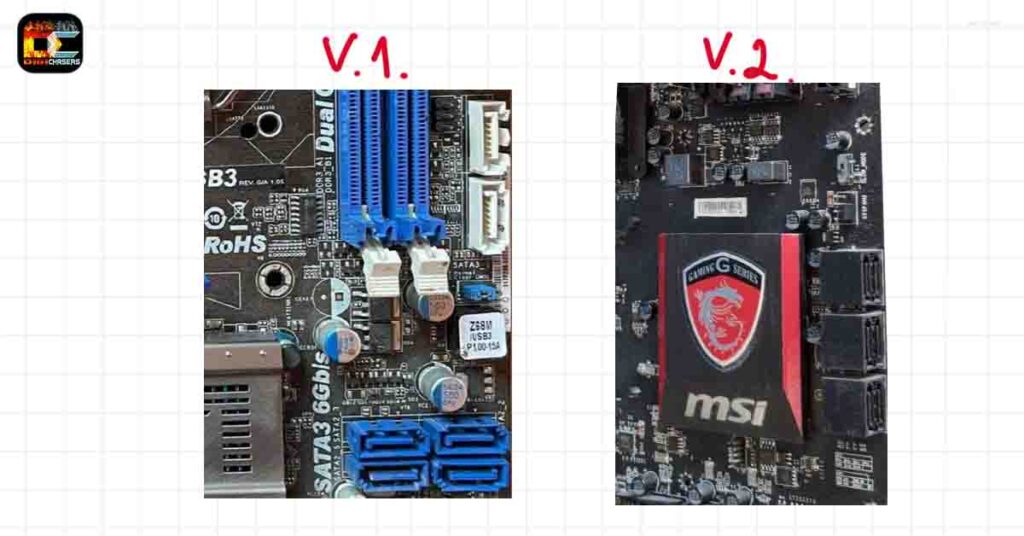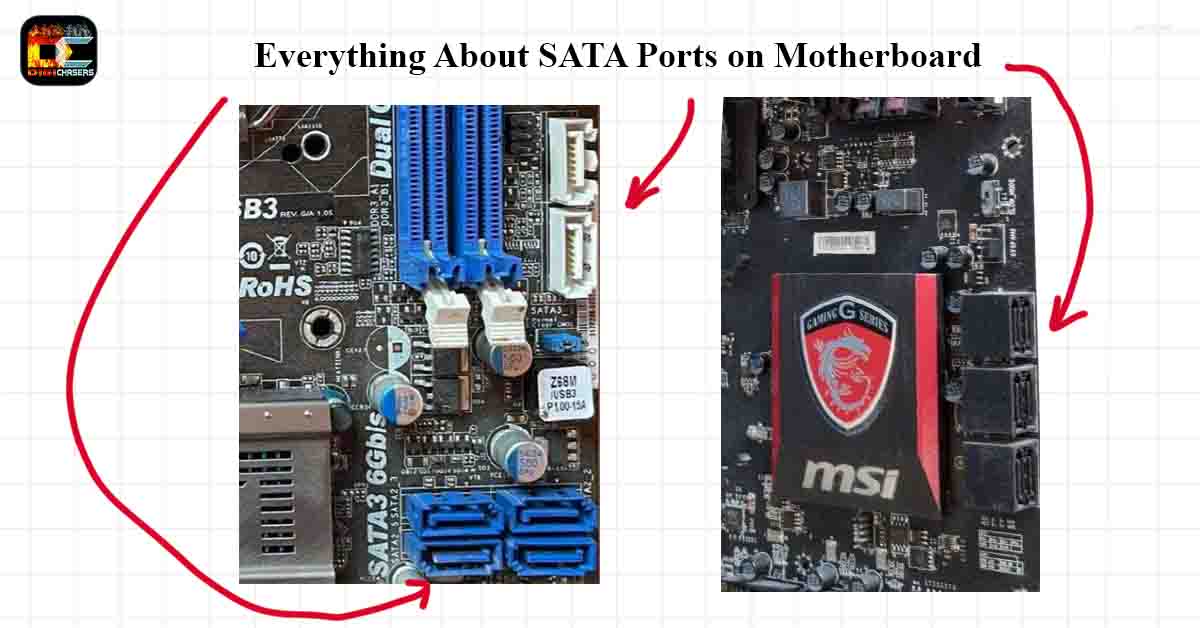What are SATA ports on a motherboard for?
S-ATA (Serial Advanced Technology Attachment) is a computer connector bus connecting mass storage devices such as hard disk drives, optical drives, and solid-state drives.
When SATA technology was announced?

This technology hit the market in 2000 and will soon replace the previous PATA interface. In 2003, SATA revision 1.0 was released, which was supposed to communicate at a rate of 1.5 Gbit/s. For example PATA has the capacity of data transfer speeds of 33/66/100/133 MB/second, whereas SATA is capable of 150/300/600 MBs/second.
And in 2020, the SATA revision 3.5 was released. It has a transfer speed of 600 MB / s. In short, all versions of 3.X are called SATA 3.
So, as you know, you won’t find an SSD on the market right now that has a higher transfer rate than 600 MB/s. You can check Amazon.com, where you can find most popular SSD at this time – Kingston 240GB A400 SATA 3 (write speed Up to 450 MB/s, read Speed speed up to 500 MB/s).
Fastest SATA SSD 2022
At this moment fastest SSD on the market is – Seagate FireCuda 120 SSD 2TB, witch declares write speed up to 540MB/s and read speed up to 560MB/s. And it still doesn’t reach the maximum transfer speed of the SATA port.
How many SATA ports on my Motherboard?
The motherboard will usually have sufficient SATA ports to accommodate the average computer user. For the average user, 2-3 SATA ports are usually sufficient.
Number of SATA ports on motherboard
There are usually from 2 to 6 SATA ports on the motherboard. The most reliable way is to check with your own eyes. Then, if the computer side comes off, it can be done easily.
For example, my Motherboard from a daily PC has 6 SATA 3.0 ports, which is more than I need.

If you don’t want to disassemble your computer to find out the number of SATA ports you have, you can always check the motherboard manual on internet.
Download free software “speccy” to inspect your PC hardware, and after that, type in google.com your motherboard name + manual (in my case – “machinist x99 motherboard manual”.
SATA 3 port on Motherboard

SATA ports come in a variety of colors, it has a meaning, but different manufacturers use different colors. So this is not the equivalent of a USB 3 when a blue USB connector means it is a USB 3. The most common black SATA ports are primary ports. But as you can see in the example above, it comes in a variety of colors, as in this case – white.
SATA 4 release date
SATA 3 was released in 2008 and revised 3.1, revision 3.2, revision 3.3, revision 3.4, and revision 3.5 (2020). Rumors information is that there may or may not be new revisions or generations.
Where are SATA ports on motherboard?

SATA connectors on the motherboard are usually on the right side of the button. Of course, another location may occur, so if you can’t find the SATA port or SATA 3 port, you should look at the Motherboard manual.
What does a SATA port look like on a Motherboard?
All SATA ports look the same, but they can be installed differently, which looks different at first glance. An example is given below.

Broken SATA port on motherboard
SATA port failure occurs when you connect the SATA cable without looking to the SATA port. To avoid this, always do it in a leisurely, well-lit room (or use a flashlight). Also, be sure to press the button on the back of the cable when disconnecting the SATA cable.
How to fix SATA port on Motherboard?
This Video guide shows a simple way to fix a broken SATA port if there is no damage to the metal pins. Of course, be careful with the glue. If it gets out of place, there may be a bigger problem.
Related articles
- Do Motherboards come with SATA Cables? Answered
- What is PCIe NVMe SSD? Explained.
- What are PCIe X1 Slots Used For? Ultimate Beginner’s Guide
- Killer e2200 gigabit ethernet controller. Explained.
- My IP address looks weird. It is totally normal phenomenon.
How to expand SATA ports on motherboard?
If you want to expand the number of SATA ports on the motherboard, you can always use a SATA expander that connects to the PCIe connector.
Different types of the expander are available at Amazon.com or any other store. We offer a time-certified Ziyituod PCIe SATA Card.

Conclusion
SATA ports are slowly withdrawing from the computer market, but as long as SATA SSDs, HDDs or CD / DVD rooms are in use, we will see them on motherboards.
If you still have a question about SATA ports, you can leave it in the comments section.

